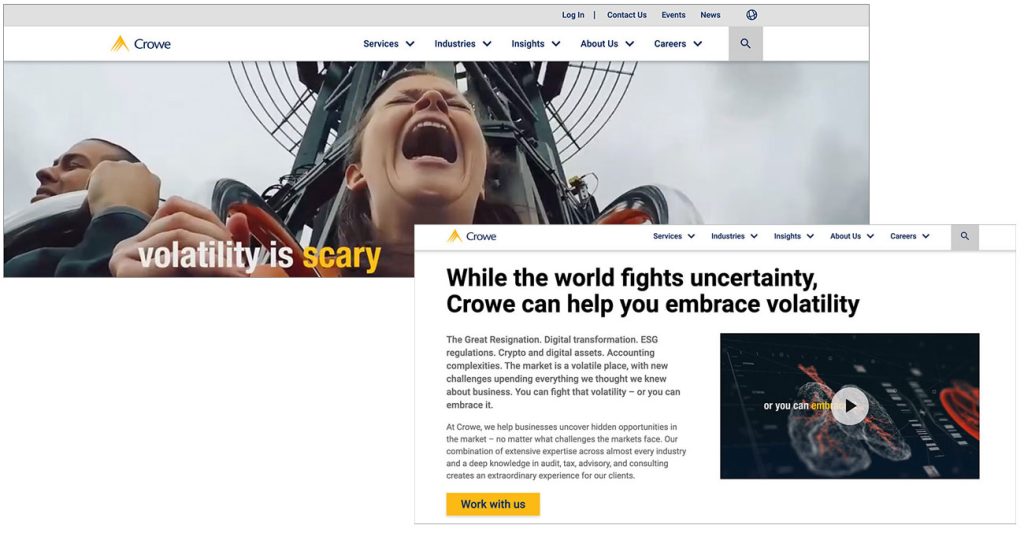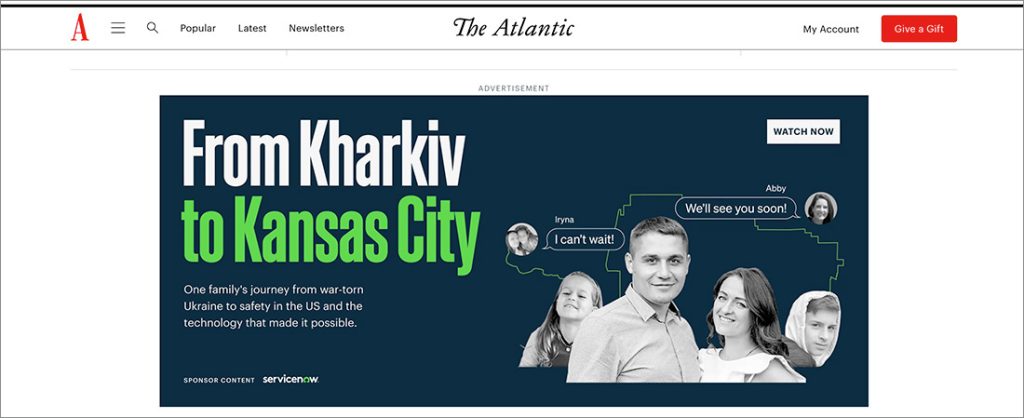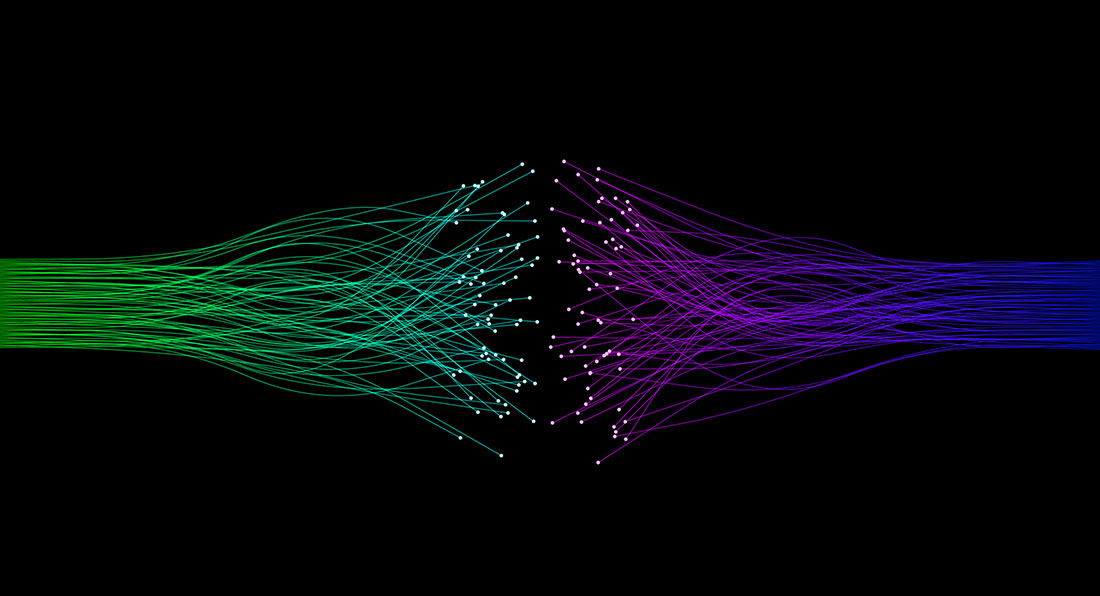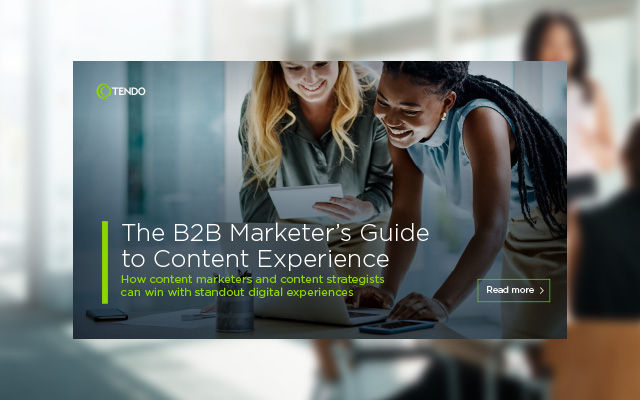SHARE

Since forever, sales pros have understood the power of personal connection. Listening to people. Sharing stories. Building rapport and authentic relationships, which in turn humanizes their company and brand—and leads to more closed deals and more happy, loyal customers.
That’s a recipe for success in B2B marketing as well. But as a marketer, you need to start following that playbook a little more closely. Today, your marketing content must shoulder more of that relationship-building work, since sales reps get far less face time with buyers than they used to.
In a digital-first world, the content experiences you deliver must humanize your brand, engender trust, and create positive relationships. Read on to learn the why and how of humanizing B2B marketing content.
Why Humanizing B2B Content Matters
Consider how decreased person-to-person interaction between workers has affected the B2B buyer journey, especially since the pandemic:
- Buyers prefer self-service: 100% of B2B buyers want self-service for the majority of the buying process, according to a 2022 TrustRadius report. That means far less time talking with sales teams—and far fewer opportunities to connect emotionally with buyers and form relationships.
- Content consumption has increased: 55% of B2B buyers rely more on content to research purchasing decisions that they did one year ago, according to a 2022 Demand Gen Report study.
- B2B buying is emotional: Contrary to popular belief, purchasing a B2B product or service happens through both rational and emotional decision-making. A seminal Google study from 2013 found that B2B brands actually drive more emotional connections than B2C brands, and that purchase decisions are strongly influenced by interpersonal and emotional forces.
Bottom line: The B2B buyer journey is now a mostly digital journey, driven by content. And a key digital differentiator is your brand’s ability to connect with buyers meaningfully.
What Does It Mean to Humanize the Content Experience?
First of all, let’s admit that “humanizing B2B marketing content” sounds a bit odd, as if it’s a process to improve generic prose generated by robots. Commence humanizing content in 3, 2, 1… Yet think of how often the human element is missing in B2B: too much content focuses on product features and specs over human needs and outcomes. We forget that B2B customers are people, not customer segments or MQLs.
To humanize the B2B content experience is to reflect the human qualities of both buyers and sellers:
- Your content recognizes peoples’ individual needs and challenges; it connects with them emotionally and demonstrates that your organization is trustworthy.
- Your content reveals the human side of your company—that your organization is made up of passionate people on a mission to help customers solve problems.

High-Level Strategies for Down-to-Earth Content
Humanizing B2B content begins with a content strategy that recognizes all the different things your audience values.
Certainly your customers value a quality product or service that meets their requirements at an acceptable price. That’s table stakes. But B2B customers also value many other elements of a business, such as how its product or service supports their individual career path, or how well your company’s vision and purpose inspire them.
Those types of values are captured in Bain & Company’s “The B2B Elements of Value Pyramid,” which classifies 40 distinct kinds of value that B2B offerings provide to customers. At the bottom of the pyramid are those table-stakes requirements, and at the top sit the elements of purpose: vision, hope, social responsibility.
Is your content addressing those higher-level values?
Give Your Audience Something to Buy Into (Not Just Buy)
The Value Pyramid dovetails with a fascinating article from the LinkedIn B2B Institute, “Humanizing B2B Marketing.” Dean Aragon, CEO of Shell Brands International, explains his thesis that it isn’t enough for B2B companies to give customers something to buy. Because what they really want is something to buy into:
- “How much do we know about our B2B customer’s inner motivations, the psychological levers, the unarticulated needs?” asks Aragon. “Therein lies the acknowledgement of their humanity.“It’s incumbent upon a B2B marketer or commercial manager to probe deeper and unearth these. Do [the companies you’re trying to engage] have a thought leadership agenda? Are they looking for a trusted partner, an advisor in a game-changing agenda item? Do they want to transcend their industry and be something more in their country, a pivotal player in nation building? What is the bigger dream?”
Questions like these can help you develop a content strategy that resonates more deeply with customers and builds trust, affinity, and loyalty. As you craft this strategy, consider these three best practices:
- Define your thought leadership agenda. Articulate the vision of your company’s impact in the world and within your industry at large. Describe how you’re improving peoples’ lives.
- Communicate your purpose. Define your brand’s reason for existing and weave that into your thought leadership content. Unlock the power of purpose!
- Collaborate with influencers. Partner with independent influencers, industry thought leaders or content creators who share your vision and purpose. Co-create authentic content that inspires your audience and speaks directly to their needs.
- Launch an employee advocacy program. Extend your thought leadership to individual employees, allowing them to share your company vision and purpose in their own words.

Humanizing B2B Content: It’s the Little Things
With a content strategy in place, it’s time to get more tactical. To add a human touch to your content, start at the sentence level in your product and solution pages, blog posts, videos, and case studies. That’s where the magic happens. Follow these focused tips and best practices:
- Inspire with storytelling. Whenever possible, convey your organization’s value (and values) as stories—with a protagonist, maybe even a villain, and a journey or quest. Stories are sticky. People are more likely to remember them.
- Be customer-focused: Is your content focused more on customer needs or company capabilities? On solutions to customer challenges or on product features and benefits? Humanized content speaks directly to people with empathy. It acknowledges their pain points, needs, and aspirations. For more guidance on customer-focused messaging, read Tendo’s ebook, 3 Principles for Better B2B Messaging.
- Capture deep insights and data: Customer-focused content, as described above, requires extensive research. Go the extra mile to conduct customer surveys and direct interviews, or solicit regular input from customer support and sales teams that speak to customers every day. Mine your CRM data for customer preferences and behaviors, and capture zero-party and first-party data on your website. Then distill those rich insights into buyer personas that inform every customer-facing sentence you write.
- Personalize the content experience: Rich data can also feed your digital platform or personalization engine to serve customers the right customer-focused content at the right moment. You’ll earn their appreciation by anticipating their needs and guiding them toward their informational goals.
- Dispense with jargon: We keep repeating ourselves on this topic, but jargon just doesn’t seem to go away in B2B. Humans get frustrated when they can’t understand what the heck you’re talking about. So even if you’re writing for engineers and developers, keep your prose crisp and clear, and as simple as possible.
- Show some personality: You knew this tip was coming. But it’s foundational for humanizing content. Be engaging, relatable, and conversational if you want to connect authentically with people. Be stiff, formal, and distant if you don’t. Revisit (or revise?) your brand guidelines on voice, tone, and personality, and find ways to express them in your copy.
- Spotlight customer voices: Make customers the hero of your story. Share their company challenges—as told by the individuals who navigated and overcame them. Pepper your content with customer pull quotes and video interviews. And don’t confine customer stories and insights to case studies: Invite them to contribute to your thought leadership content. They have much wisdom to share.
- Showcase your people: Highlight the rockstar employees that drive your company’s success and innovation. Amplify their individual voices in blog posts, webinars, short videos, pull quotes, and social media posts. Share photos of them (and avoid generic stock images of people). Let them announce product updates and new launches, or explain company decisions and strategic directions. Your customers and followers will appreciate this transparency and authenticity.
Work with Tendo to Bring Your Content Alive
At Tendo we understand the power of content experience to connect with customers authentically and deepen customer loyalty. Get in touch with us to share your goals and challenges, and we’ll help you craft a content strategy with a human touch. Contact us today.
Subscribe for Content Strategy Trends and Guidance
Get our monthly e-newsletter with Tendo’s latest thought leadership and content resources for B2B leaders.




